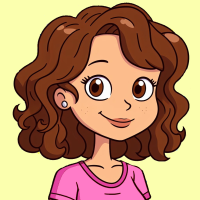HEDS or JHD
Zimba
Online Community Member Posts: 1,822 Empowering
Family member dignosed with JHD/low muscle tone some years ago but upon more reading I am thinking it could be HEDS??
Toes dislocate, ankles give way and have podiatry made shoes with insoles, shoulder pops out, use hand splits, knees give way, headaches, eye sight affected, body pain, back has gone ridge to support frame and can’t stand for long whilst doing a task that require to stand still, need to keep moving gait from one foot to the other due do pain and fatigue, scar badly, limited arm movement. The occupational therapist and physio said parts of the body are going ridge to be able to support the frame due to JHD.
I know we are all different but…How does you HEDS affect you?
Toes dislocate, ankles give way and have podiatry made shoes with insoles, shoulder pops out, use hand splits, knees give way, headaches, eye sight affected, body pain, back has gone ridge to support frame and can’t stand for long whilst doing a task that require to stand still, need to keep moving gait from one foot to the other due do pain and fatigue, scar badly, limited arm movement. The occupational therapist and physio said parts of the body are going ridge to be able to support the frame due to JHD.
I know we are all different but…How does you HEDS affect you?
0
Comments
-
Hi @Zimba, when you say your family member was diagnosed with JHD, is this Juvenile Huntington's Disease or something else? Were they offered any genetic testing or other tests to help diagnose them?
I know a couple of people with HEDS and have some hypermobility myself. I do find personally that parts of my body are more rigid and stiff to make up for the joints that are hypermobile which can cause problems in itself. It does vary quite a lot from person to person I think, hopefully some of our other members can offer their experiences
0 -
Hi @Rosie_Scope
They were diagnosed with joint hypermobility syndrome some years ago but am I right in thinking that now referred to as joint hypermobility disorder? Please feel free to correct me if I’m incorrect 🙂.0 -
Ah that sounds more like it @Zimba, sorry for the misunderstanding. Just wanted to check it wasn't the other disorder as I wasn't sure!
I've heard Hypermobility Spectrum Disorder(s) (HSD) being used as a term for people with joint hypermobility disorders including Ehlers Danlos Syndrome and other hypermobility syndromes that aren't EDS related. I'm not an expert on this so I could be wrong, but I believe Joint Hypermobility Syndrome is an older term and it's not used as much any more.
If your relative has other symptoms that seem more like HEDS and thinks their diagnosis needs updating, it might be worth them asking about it when they next see their medical team 0
0 -
I think the best person to ask here would be the most excellent @chiarieds
 0
0 -
Hi Zimba - myself children & all 3 grandchildren have hEDS. A Dr said some years ago that the muscles on either side of my spine (paravertebral muscles) were in spasm due to the pain in my lower back. I don't know if that's similar to what your family member has, but it sounds like it.As Rosie says, the Hypermobile type of EDS (hEDS) can vary from person to person, there's even 'variable expression' within one family, as I can testify! Joint Hypermobility Syndrome (JHS) used to be called Benign JHS, then the 'Benign' was dropped. Just to slightly correct @Rosie_Scope - Those who have Hypermobility Spectrum Disorder (HSD) can be just as affected as those with hEDS, but just don't meet the new criteria for hEDS. HSD will include those previously said to have Joint Hypermobility Syndrome. There's an explanation here: https://www.ehlers-danlos.org/what-is-eds/information-on-eds/hypermobile-eds-and-hypermobility-spectrum-disorders/With me, due to hEDS I have generalised osteoarthrosis. When this was looked into with a scan, all my joints are affected, apart from my ankles. I mainly have subluxations of my knees, tho mainly the R one. My youngest granddaughter had a complete dislocation of her R patella last autumn. I mainly have lower back pain, & trouble with my R arm, but that in part because my shoulder, wrist & thumb were damaged by another many years ago.My son has problems with his back, & shoulders, tho has hurt a foot recently. My daughter is least affected, & my middle granddaughter has bother with her knees mainly.The main problem for us as a family is that we have Chiari 1 Malformation associated with EDS. This is a neurological problem which occurs in a few with EDS, mainly hEDS, tho some with a different type of EDS (also some with Marfan Syndrome, & other heritable connective tissue disorders).Due to the Chiari 1 Malformation complication, this has ranged from my youngest daughter having both vocal cords paralysed, my eldest daughter sometimes having breathing problems, to myself being in pain the moment I'm upright, & having neuropathic pain, & dysautonomia.My son looks somewhat similar to Marfan Syndrome (has a marfanoid habitus), & we both have some positive signs of it, & he also has very long, thin fingers (arachnodactyly). Because of this we both get echocardiograms every year. We also both have low blood pressure & suffer from orthostatic hypotension.There can be overlap between EDS & other somewhat similar heritable disorders.A good resource for HSD: https://www.ehlers-danlos.com/what-is-hsd/We posted at the same time @Albus_Scope
 3
3 -
Thank you @chiarieds for sharing you and your family’s symptoms, I can see there’s definitely cross overs and my family member display certain features with long fingers inward thumb and one thing that’s apparent is how smooth their skin appears, they have subluxations of knees and shoulders and when they were younger and first diginosed there was mention of lax ligaments/low muscle tone and instability of joints hence like you noted the muscle spasms, their back has limited movement now and physio said its gone like that to be able to support their frame. Fatigue and pain have always been present and also falling over from an early age which the head teacher picked up on all those years ago which started the ball rolling to find out what was going on.
Has it been an easy road for you to get your diagnosis ? Or did you face obstacles.
0 -
Hi @Zimba - & you're welcome. In some ways it was hard getting a diagnosis, & in other ways there were some moments of serendipity, which certainly helped.I was adopted aged 6 months, so no family history. I don't remember, but my Mum said she'd taken me to the GP due to her concerns, who said it was just 'growing pains.' Fast forward to when I was a physio student, it was picked up that I had hypermobile joints. I saw a rheumatologist, who didn't come up with an explanation as to my problems.Then I saw a locum Dr; he said he thought I had a genetic disorder, but couldn't remember the name of it! He'd noted that my arm span was greater than my height, which meant nothing to me at the time, but can be related to Marfan Syndrome. He said I had 'arthrochalasia multiplex congenita,' something I remembered for some reason!Our youngest daughter had severe breathing problems from birth; a L pneumothorax (which can occur with the vascular type of EDS), & inspiratory stridor; she needed a tracheotomy when 1 week old.My eldest daughter, some years later, I realised was suffering somewhat like I'd been at her age, so I was beginning to think this was indeed a genetic disorder. When she was 19, she asked me to look into her little sister's problems, as she was concerned she might have a baby with similar problems in the future.I researched, remembering 'arthrochalasia multiples congenita,' which took me to a USA website about EDS; I thought perhaps we 'just' had JHS.The founder of the UK EDS Support lived near me, & I thought I'd ask if she could recommend a rheumatologist. She said after seeing hundreds of families that had EDS, she was quite sure I had this, one of the things being my very soft skin. On hearing I'd been a physio, she gave me all the literature they had, & said whom I should see. The literature was an eye opener, especially when I saw this Dutch Dr mentioning 'stridor,' which I thought rather unusual surely in EDS.My son & I waited 2 & a half years to see this geneticist & dermatologist whose interest was in heritable connective tissue disorders. He thought we had hEDS, but couldn't rule out that my son had a fibrillin defect, which occurs in Marfan Syndrome. He'd previously written to me, & phoned, but didn't think EDS & Chiari 1 Malformation could be associated, tho thought I put forward an argument for this.Then I met this USA Dr online; unbeknowst to me he was a neurosurgeon who become the assistant director of the world's first Chiari Centre. I had become convinced through researching medical papers that there was an association between Chiari 1 Malformation & EDS; at the same time, he was finding some of his Chiari patients also had EDS, so we stayed in touch. He helped me enormously in raising awareness that Chiari 1 Malformation & EDS can be associated here in the UK.So, I just about found out what we had, then got hEDS confirmed by this geneticist. He recommended a rheumatologist with a similar interest in heritable connective tissue disorders a bit nearer to us, who also diagnosed our eldest daughter. Her children were later diagnosed with hEDS by another geneticist, & by then I'd compiled a family history, which hopefully helped.Sorry for the long epistle, but mentioning some of this as I've later learnt more about EDS from the American Syringomyelia & Chiari Alliance Project's past video conferences for patients: https://asap.org/conferences/past-conference/ EDS is featured so many times, & I feel some USA Drs are about a decade ahead of ours.One useful resource I should however mention: https://gptoolkit.ehlers-danlos.org/ It's not completely up to date, but useful to share & discuss with your family member's GP.
1 -
Hi @chiarieds
What an incredible journey you’ve had in getting you and your family diagnosed, it must of been truly exhausting at times for you, thank you for sharing it with me.
All the links you have sign posted me to have been really helpful, I just took a quick look at GP tool kit and they could tick yes to very question, I saw that it mentions miss diagnosis of Chronic fatigue syndrome/myalgic encephalomyelitis and IBS which my family member was diagnosed with at the age of 15, plus a few more crossover conditions that I can see that they have.
Many thanks for all your help very much appreciated.1
Categories
- All Categories
- 15.7K Start here and say hello!
- 7.4K Coffee lounge
- 103 Games den
- 1.7K People power
- 149 Announcements and information
- 24.8K Talk about life
- 6K Everyday life
- 481 Current affairs
- 2.5K Families and carers
- 889 Education and skills
- 1.9K Work
- 562 Money and bills
- 3.7K Housing and independent living
- 1.1K Transport and travel
- 632 Relationships
- 1.5K Mental health and wellbeing
- 2.5K Talk about your impairment
- 873 Rare, invisible, and undiagnosed conditions
- 936 Neurological impairments and pain
- 2.2K Cerebral Palsy Network
- 1.2K Autism and neurodiversity
- 40.9K Talk about your benefits
- 6.1K Employment and Support Allowance (ESA)
- 20K PIP, DLA, ADP and AA
- 8.9K Universal Credit (UC)
- 5.9K Benefits and income


